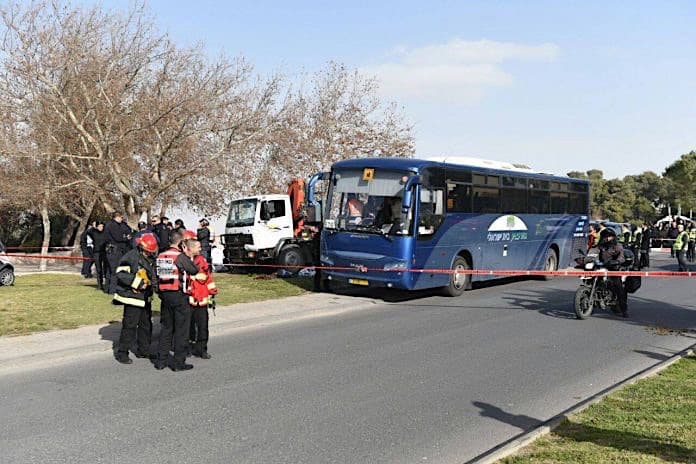Editor’s note: Protective intelligence is defined as the training of people in how to spot behaviors and communications that indicate a potential target is being surveilled prior to an attack. School buses are considered “soft targets,” because they are mobile, difficult to protect, and are highly vulnerable to a variety of attack methods.
Several training opportunities exist for school bus drivers to increase the vigilance of their security preparedness, which includes protective intelligence. While the industry has yet to experience a widescale school bus security event of the magnitude that buses in Israel have, these incidents serve as valuable lessons that student transporters and society at-large can learn from.
The following information is provided by Michael S. Dorn and Chris Dorn of Safe Havens International, a global security firm. The father and son team have written numerous school bus security articles and blogs for School Transportation News and have both presented at the STN EXPO.
Israel Case Studies
“The following case studies from Israeli suicide bombing attacks against buses are highly illustrative of these points (regarding protective intelligence). While the level of risk and operational environment are much different than in the U.S., there are still valuable lessons. These case studies are summarized from “Security Awareness for Public Bus Transportation: Case Studies of Attacks Against the Israeli Public Bus System (MTI Report 11-07)” prepared by the Mineta Transportation Institute.
Aug. 2, 2001: Kibbutzun Junction, No casualties.
A suicide bomber who was trying to board a bus to carry out a suicide bombing attack, aroused the suspicion of the bus driver, who tackled and restrained him as he approached the bus. The driver was trained to stop short of the bus stop and observe passengers before proceeding and allowing them to load.
Feb. 19, 2002: Mehola Junction, No casualties.
A suicide bomber attempted to board a bus near Mehola (an Israeli village in the northern Jordan Valley) to carry out an attack, but was pushed away by the driver after he noticed the man was wearing a large puffy jacket and was reaching his hand in his pocket. The bomber blew himself up in an open field near the bus stop after the bus drove away.
Feb. 6, 2002: Ma’ale Adumim, No casualties.
A suicide bomber who tried to board a bus was restrained, taken off the bus, and arrested by border police. The suspicious indicators observed included “a passenger wearing clothes that are out of character with the environment or neighborhood, abnormal behavior, concealed objects in the hand, a clenched fist, etc.” This proved effective in alerting the driver to the presence of the bomber.
While it is always helpful to see how attacks have been prevented—it can also be very instructive to study attacks that could have been prevented if proper procedures had been followed.
Nov. 29, 2001: Israeli Defense Forces Base #80; 3 killed and 8 wounded.
A suicide bomber boarded an intercity line bus at a bus stop next to the town of Umm al-Fahm, and blew himself up in the center of the bus as it was at an Israeli military base. The driver later described the bomber as being freshly shaved, with a new haircut, and wearing very elegant clothing, including a heavy sweater and a coat. Although the driver thought the young man’s appearance was unusual, he did not take any other action. The bomber paid with a 200 NIS bill, although the ride costs only about 20 NIS, and did not wait for his change. When the driver called to him to collect his change, the terrorist detonated the bomb.
Although the terrorist was instructed to detonate the IED upon reaching the end of a route in a high traffic area, he did so several minutes after boarding, when the bus was fairly empty. The most probable explanation is that he misinterpreted the driver’s call for the change and was concerned that if he returned, the driver would become suspicious. It should be noted that a suicide bomber acts under incredible pressure, and any interaction with authority figures may have a great mental impact and can disrupt the bomber’s plans.
Read more on behavioral approaches to preventing school campus and school bus security threats in the May 2018 edition of School Transportation News magazine.

















